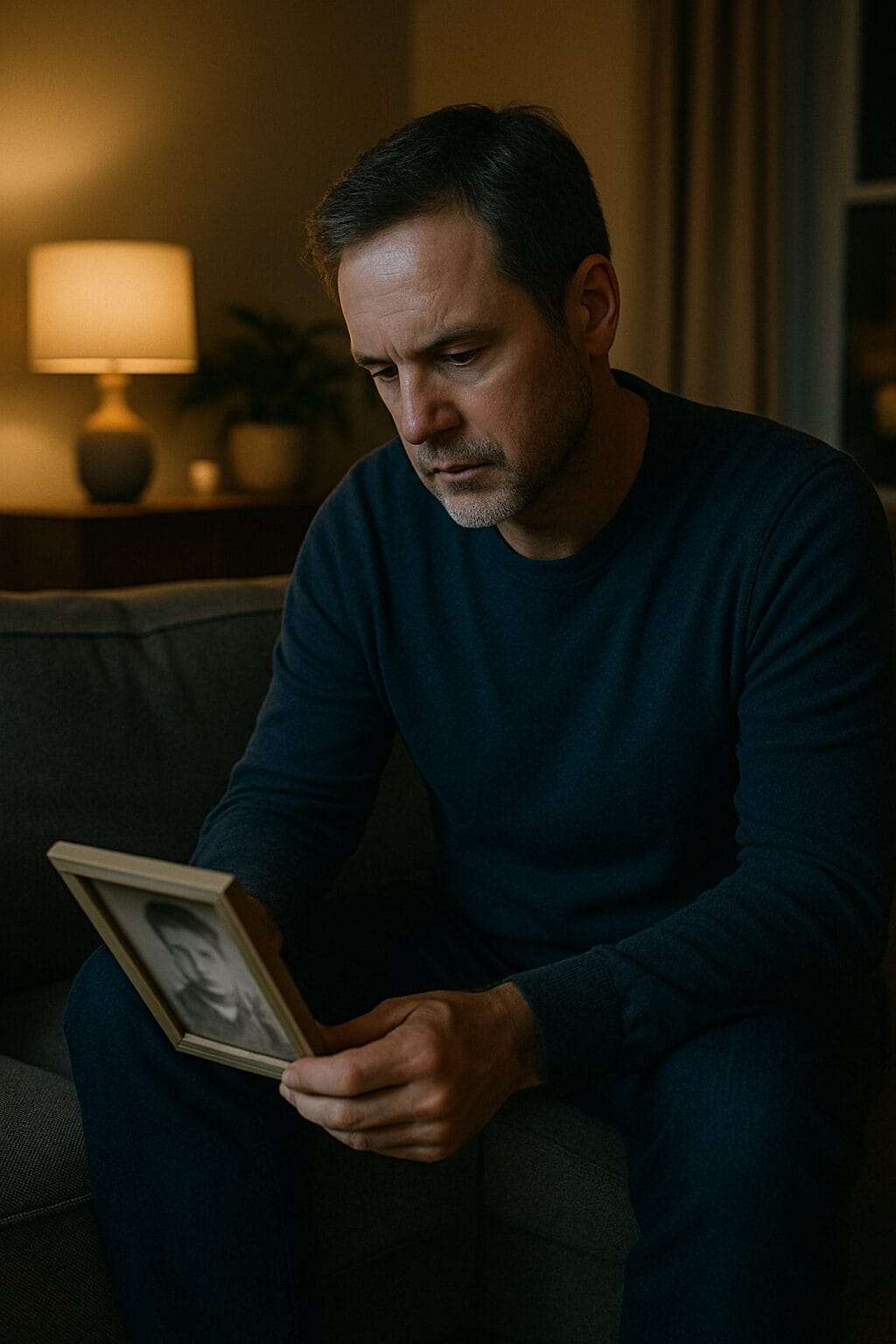
Why Childhood Trauma Turns into Control Issues
- Updated: November 4, 2025
Controlling people aren’t always bossy or arrogant.
Sometimes, they’re just scared.
I’m not talking about power-hungry bullies. I mean the ones who obsess over details, flinch at surprises, and unravel when plans go sideways.
For many of us, control didn’t start as a personality flaw—it started as a lifeline.
If your childhood was unstable or emotionally neglectful, control may have been your only way to feel safe. But what happens when that once-necessary survival skill becomes a barrier to peace, love, or connection?
If control helped you survive, that’s valid.
But if it’s now holding your life hostage, it’s time to look closer—with courage, not shame.
If any of this hits home, you’re not alone.
Here’s what we’ll explore together.
Inside This Guide: How Childhood Trauma Shapes—and Heals—Controlling Behavior
How Childhood Chaos Wires Us for Control
Growing up in a pain-filled home leaves lasting imprints.
If we’re honest, many of our parents were desperate—financially, emotionally, or spiritually. And when desperation runs the show, there’s no space for healthy modeling. They didn’t just struggle with bills or moods—they struggled with themselves.
To put it bluntly: our parents didn’t know how to manage their resources, their relationships, or their own pain. Some misused time and money. Others let their wounds spill into the family dynamic like secondhand smoke—quiet, toxic, and everywhere.
For a child, this creates chaos.
Not enough food. Not enough attention. Not enough safety.
So we adapt.

We find little rituals to feel in control.
We monitor moods. We track patterns.
We become experts at anticipating disaster—because nobody else is.
Those coping skills? They’re brilliant. But over time, they can harden into controlling behavior.
Let me show you how that happened—for me, and for someone else.
How Trauma Morphs Into Controlling Behavior

I remember seasons during my childhood when we didn’t even have electricity. These were the years before I lived with my mother, shortly after my parents separated. It was common to start and end the day without electricity for weeks at a time.
My mother refused to get a job to pay the bills because she believed it was my father’s responsibility. As a result, I became well acquainted with the use of candles. When it was time to clean myself, I had to heat water on the stove and bathe by candlelight.
Those moments of scarcity left a lasting mark on me, both emotionally and spiritually. Living in an environment where necessities were uncertain made me hyper-aware of what I could and couldn’t control.
My world felt fragile and unstable, so I began clinging to routines and habits that gave me a sense of order and security. What started as a survival mechanism eventually grew into controlling behaviors—a way to prevent the chaos I feared might return.
When Control Becomes a Coping Mechanism
I once sat across from a client—let’s call her Melody—in a tense, quiet moment.
She’d spent most of the session venting about her partner’s smoking. But when I gently asked, “Why are you so focused on his habit—but won’t talk about your anger?”
Her defensiveness said everything.

This is the pattern I see all the time:
Controlling behavior that traces back—not to malice—but to childhood pain.
Melody grew up in an unstable home. Her father came and went whenever he pleased. Her mother, emotionally rattled and worn down, channeled that frustration into verbal abuse—aimed at Melody and her brother.
Fast forward: now she dates emotionally absent men.
They may not physically leave—but their hearts do.
They disappear into addictions, distractions, silence.
So Melody tries to fix them. Monitor them. Control them.
But avoids looking at her own rage.
That’s the cycle.
Unhealed wounds show up in hyper-focus on other people’s flaws.
We chase “fixing” because facing our own pain feels too vulnerable.
I shared a bit of her story on social media. Click the link below to join the conversation.
After a moment of silence, I asked her, “Why are you so preoccupied with your man’s smoking, but you avoid talking about your anger issues?”
— Denise G. Lee (@DeniseGLee) December 4, 2024
I see signs of controlling behavior all the time.
All the time, y’all.
And when you get straight to it, it all goes back to childhood.…
Your story might look different from the stories I shared, but I’m sure you can relate to that feeling of desperation.
When we don’t address our childhood pain, it doesn’t disappear. Instead, it shows up in unnecessary, preventable drama that derails our lives and relationships. A life script influences our decisions in ways we don’t even realize. Many of the patterns we repeat—especially in relationships—are shaped by unconscious beliefs formed in childhood.
Take a moment to reflect:
- Do you feel desperate now in some area of your life?
- How is that impacting your relationships, both personal and professional?
- Do you find yourself chasing attention, money, or power to fill a deeper void?
The good news is that these patterns can be unraveled. Recovery is possible, and it begins with understanding the connection between your early experiences and your present-day struggles.
Why You Feel Unsafe Even When Life Is ‘Fine’
Childhood is the foundation of our beliefs, emotions, and behaviors. What we experience in those early years shapes how we see ourselves, how we relate to others, and how we interpret the world around us.
And if your early environment was marked by fear, instability, or emotional neglect?
That becomes your baseline for normal.
Even when life looks “fine” on the outside—steady job, decent home, maybe even a supportive partner—your body might still feel unsafe. You flinch at surprises. You brace for rejection. You can’t relax, even when nothing is obviously wrong.
Why?
Because children don’t just survive hardship—they absorb it.
We internalize chaos, memorize fear, and learn to anticipate loss as a form of safety.
That blueprint doesn’t vanish when you grow up.
It becomes your nervous system’s default setting.

The Biology of Control: What Trauma Does to Your Body
There’s a reason you still feel like you’re bracing for impact.
Between 1995–1997, the CDC and Kaiser Permanente ran the Adverse Childhood Experiences (ACE) Study. It found a strong link between early trauma—abuse, neglect, household dysfunction—and serious health issues in adulthood: anxiety, depression, addiction, heart disease, even early death.
Why does this happen?
Because trauma doesn’t just live in your memories.
It lives in your body.

When you grow up in fear, your stress-response system gets stuck in overdrive. Your body floods with cortisol and adrenaline—not for days, but for years. These hormones are meant for short-term danger, not long-term survival. Over time, they wear you down.
And if you grew up with parents who managed everything through control or guilt, that wiring doesn’t vanish once you’re grown. It simply evolves — often into the same habits you once resented.
When Your Parents Still Pull the Strings: How Control Shows Up in Your Business unpacks what that looks like when those old dynamics start replaying in adulthood.
What this looks like in adulthood:
Cortisol & Adrenaline Overload
Chronic stress leads to inflammation, mood swings, anxiety, and burnout.Perceiving Danger Everywhere
Everyday situations feel threatening. You read neutral comments as criticism. You assume the worst. Even kindness feels suspicious.
This isn’t just “overthinking.”
It’s a nervous system trained for chaos—and still waiting for it.
When Control Takes Over: The Many Faces of Controlling Behavior
Unresolved childhood trauma doesn’t just vanish.
It matures.
It follows you into boardrooms, bedrooms, friendships, and families—shapeshifting into habits that look like leadership or care… but are often fear in disguise.
Imagine a child growing up in a home where yelling, manipulation, or guilt ruled the day. That child learns quickly: to stay safe, you either submit, perform, or fight back. Over time, control—through people-pleasing, criticism, or silence—becomes the only way to feel connected.
Fast forward to adulthood, and those survival strategies resurface.
You micromanage every detail.
You don’t trust your team to “do it right.”
You rework tasks yourself, not because you’re arrogant—but because failure still feels dangerous.

This isn’t about domination.
It’s your inner child crying out for stability in a world that once felt wildly unpredictable.
Understanding this doesn’t excuse harmful behavior—but it does give you power.
When control becomes a coping mechanism, it’s usually rooted in something deeper than fear. It’s tied to:
Fusion (emotional merging to avoid abandonment)
Oppositionality (resistance that mimics early experiences of being overruled or ignored)
These are defense styles—not character flaws.
They often form when you weren’t allowed to say no, express fear, or set boundaries as a child.
And the longer they go unexamined, the more they infiltrate every relationship you care about.
The Many Faces of Controlling Behavior
| Controlling Behavior | How it Sounds | How it Hurts |
|---|---|---|
| Isolation | “If it’s so good, why do you need time away from me?” | Undermines connection by cutting off healthy outside support systems. |
| Manipulation | “By the way, (INSERT NAME) never gave me the problems I have with you.” | Leverages guilt to control behavior while avoiding vulnerability. |
| Imposing Limitations | “I need a record of your activities—hour by hour.” | Replaces trust with surveillance, breeding resentment and fear. |
| Aggression | “Get out of my way—or else.” | Reflects a fragile sense of self-control projected outward as threat. |
| Constant Criticism | “Are you even listening? I already told you how to do it.” | Erodes confidence and reinforces power imbalances. |
| Boundary Violations | “I know you said no—but I need you.” | Dismisses others’ limits in favor of immediate emotional relief. |
| Avoiding Responsibility | “It wasn’t my fault. They dropped the ball.” | Projects blame to avoid shame—while sabotaging growth. |
| Lack of Trust | “We can’t give you more tasks after last time.” | Withholds opportunity under the illusion of protection. |
| Emotional Blackmail | “If you cancel, the whole team will suffer.” | Forces compliance through guilt rather than genuine choice. |
Controlling behavior isn’t always obvious.
It often arrives quietly—through chronic tension, passive-aggressive remarks, or unspoken expectations that punish instead of protect.
You may not notice it all at once.
But over time, it creates patterns—emotional static in your relationships that keeps intimacy just out of reach.
The image below gives a clear picture of some of these controlling tendencies.

Let’s Talk About Resentment
Resentment isn’t just anger—it’s grief with expectations attached.
If you didn’t get what you needed as a child, you might unconsciously seek it out in adult relationships. Not out of entitlement, but because your nervous system still believes maybe this time will be different.
And when it isn’t?
You tighten your grip.
You personalize every disconnect.
You try to control your way into closeness.
But here’s the truth:
Most people—unless they’re entangled in their own codependent loops—resist being controlled.
What they crave is respect. Safety. Freedom to show up as they are—not who you need them to be for your own regulation.
Control can feel protective. But it often backfires.
And the more we chase certainty through control, the more connection slips away.
Do you want a FULL-PROOF way not to feel resentful about others?
— Denise G. Lee (@DeniseGLee) December 31, 2024
Memorize this line and repeat it often: People are often irrational, consistent and unpredictable.
Why is this important?
Why is this important? Because resentment thrives on unmet expectations. When we expect…
How to Heal Controlling Behavior (Without Coddling Yourself)
This isn’t about finding your inner child on a yoga mat.
This is about recognizing that the habits keeping you “in charge” are the same ones quietly draining you.
Control isn’t always a tantrum—it’s the vice grip on your schedule.
The panic when plans shift.
The low-simmer rage when someone drops the ball and you’re left picking up the pieces—again.
But here’s what no one tells you:
Controlling behavior isn’t just about power. It’s about fear.
And if you don’t address it, you’ll build a life that’s efficient, impressive—and emotionally unlivable.
Many of us don’t just learn control — we inherit it. When leadership becomes a reenactment of family survival patterns, it’s no longer strategy; it’s self-protection wearing a blazer.
Toxic Family Patterns & Leadership: Why Old Survival Roles Don’t Work at Work unpacks how those early dynamics quietly dictate how you lead, delegate, and respond to conflict.
So, how do you break the cycle without turning healing into another performance?

1. Call It What It Is—Not What It Looks Like
Micromanaging? Hyper-productivity? The need to be consulted on everything?
That’s not “leadership.” That’s survival mode disguised as efficiency.
You don’t need more control. You need more trust—in yourself, and in your ability to handle life when it doesn’t go your way.
2. Drop the Narrative That Everything Must Go Smoothly
Plans will fall apart. Projects will derail. People will disappoint you.
You can either panic—or pivot.
Perfection isn’t the goal. Resilience is.
The next time things go sideways, don’t make it mean something about you. Make it a classroom. Learn and move.
3. Interrupt the Pattern Mid-Loop
Feel your jaw clenching?
Notice you’re rewriting someone else’s work… again?
That’s your signal. Pause. Ask: Is this about now—or is this an old wound yelling at me through a new situation?
Don’t shame yourself.
Just don’t let the pattern run the whole show.
4. Set Boundaries with Yourself, Not Just Others
It’s easy to say “no” to others.
Harder to say “no” to the internal pressure to over-deliver, over-function, or “prove” your worth.
Try this boundary:
“I don’t have to solve this today. I’m allowed to sit with it.”
Or:
“I don’t chase clarity at the cost of my peace.”
Boundaries aren’t just for relationships. They’re for your nervous system.
5. You Don’t Have to Understand Everything to Stop Doing It
Don’t get stuck in analysis paralysis.
Yes, journaling helps. So does support. But sometimes the biggest shift comes when you act before you feel “ready.”
You’re not broken.
You’re a high-capacity human who had to grow up too fast.
Now it’s time to lead from emotional integrity—not fear.
Pause Here: But Not to Spiral
You don’t need another checklist.
You need a gut check.
Before you scroll past this section like it’s optional, pause.
This is where the old wiring starts to shake loose—if you’re willing to get honest.

Ask yourself:
What do I keep trying to control… that’s actually about fear?
(The workflow? My kid’s mood? My team’s tone? My calendar?)Where am I over-functioning because I’m terrified of being seen as “too much,” “too needy,” or “too messy”?
Am I actually solving problems—or just managing my anxiety through productivity?
Do I really want control—or am I just scared to admit I feel powerless?
What routine, habit, or relational dynamic have I clung to—not because it works, but because it’s familiar?
These questions aren’t a trap.
They’re a mirror.
You don’t have to answer them perfectly. Just honestly.
If one stings—that’s the one to sit with.
Questions No One Wants to Ask—But Should
Still wondering if this is about you?
You’re not the only one. These are the questions I hear most from high performers who thought they were just “detail-oriented”—until the patterns caught up with them.

Is controlling behavior always abusive?
No. But it’s always exhausting—for you and the people around you.
Some control comes from trauma, not cruelty. That doesn’t make it harmless—it just makes it understandable. And still worth addressing.
Why do people become controlling in relationships?
Because somewhere along the line, safety got tied to supervision.
When your trust was broken early, you start believing that closeness must be managed to be preserved. That’s not love. That’s strategy born from fear..
What are the signs of controlling behavior?
You rewrite emails ten times.
You monitor your partner’s tone more than your own feelings.
You get irritated when others don’t do things your way—even when your way isn’t working.
If your nervous system only calms when everything is “just so”—pay attention. That’s not peace. That’s surveillance.
Read this: Calming Down the Nervous System After Chaos
Can someone actually heal from this?
Yes. If they want to.
But healing doesn’t mean becoming passive. It means leading with trust instead of tension.
It’s less about stopping control—and more about replacing it with real internal safety.
Can trauma cause control issues?
Yes. Trauma often leads to control issues. When you grow up in an unpredictable or unsafe environment, your nervous system learns to equate control with safety. As an adult, that survival habit can turn into a need to manage outcomes—or people—to feel secure.
How do I stop controlling patterns?
To stop controlling patterns, start by noticing the comfort they provide. You can’t release what still feels like safety. When you see how control harms both you and the people you love—and you’re ready for change—you can begin to let go.
Read next: Self-Sabotage Is a Survival Pattern: Here’s How to Break the Cycle for practical steps to end self-protective habits.
Final Reflections: Healing Beyond Control
Let’s be real—healing doesn’t mean becoming chill and passive.
It means recognizing that trying to run the show all the time is costing you more than it’s giving you.
Feeling safe doesn’t come from spreadsheets, scripts, or scheduling every moment.
It comes from facing what made you feel unsafe in the first place—and building from there.
That’s not easy work. But it’s possible work.
And if you’ve made it this far, you already know: control isn’t your problem.
It was your protector.
Now it’s time to trade survival for something deeper.
Presence. Emotional agility. Actual peace.
Ready to go deeper?
💭 Notice controlling behavior in yourself?
How are you navigating it—or what helped you move through it? Click here to share your thoughts.
📝 Want to explore your emotional patterns?
Start with the Life Script Assessment—your inner world is trying to talk. This will help you listen.
🎧 Prefer to hear this unpacked out loud?
Click here to listen to the podcast episode where I break down what it really takes to feel safe—without micromanaging your life, your relationships, or your worth.





